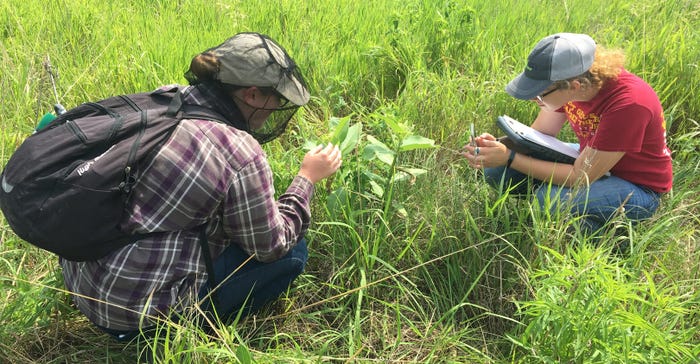September 24, 2019

By Ann Staudt
Iowa farmers faced a lot of water and weather challenges in 2019. While the state didn’t see widespread drought, some areas saw disruptive rains and standing water during planting and early in the growing season.
While this year it may have affected larger areas than normal — and climatologists tell us this phenomenon is increasingly the new normal — most farmers know where the most, and least, productive areas are within their fields. And for most, the least productive areas are those that stay wet the longest.
Wet areas of fields consistently yield less, often require replanting, or sometimes simply revert to bare soil. None of these situations improve the balance sheet for the farm and can often lead to excessive erosion and nutrient runoff.
The Conservation Learning Group (CLG), based at Iowa State University Extension, has undertaken the Redefining the Field Edge project funded through a North Central Sustainable Ag Research and Education (SARE) grant.
According to one of the project leaders, Adam Janke, assistant professor and Extension wildlife specialist with ISU’s department of natural resource ecology and management, the project is focused on:
identifying zones in the field or along the edges that consistently underproduce
developing practices to repurpose these tracts to benefit the farmer and environment
Identify low-yielding areas
As with any production business, operators seek to balance the books and turn a profit by maximizing output for every input. In the case of underproducing field areas, sometimes it can be difficult to convince a farmer that not planting wet areas can deliver a better profit.
As the project progresses across multiple seasons, it’s expected that the cold-hard economic data collected will help bear out that conclusion. There may also be a direct financial benefit to the farm business if the land taken out of production qualifies for CRP and associated land rental payments.
Regardless of the motivation for converting low-lying areas in the field, there are other advantages to taking those areas out of crop production and establishing and supporting the growth of native, perennial and diverse vegetation — namely, healthier soils, cleaner water and a resurgence of farmland wildlife.
Native perennials have extensive and complex root systems that hold soil in place. Native vegetation within and along field edges, sequester carbon dioxide, slow runoff and naturally filter nutrients from the water. Letting these areas remain wet, they can work as nature’s bioreactors for denitrification and as sinks for phosphorus-laden sediments. Consider the ecosystem benefits provided without the capital outlay associated with bioreactor implementation.
Benefits from establishing habitat
Prairie plants also tend to grow in dense masses with complex root structures that prevent the establishment of more invasive and troublesome annual plants that can put pressure on cash crops. Furthermore, establishing perennial plants where otherwise bare soil from flooded fields would prevail may reduce weed pressure in and around crops.
The creation of on-farm wildlife habitat can also benefit the farm and community at large. These areas of diverse perennial plants are proven to enable in-kind diversification of wildlife, which can be enjoyed by farmers, community members and even far-away communities where wildlife like monarchs and grassland birds migrate for winter.
One farm involved in the project near Ogden, Iowa, has converted four strategically selected underproducing areas in one section of prairie. Janke says the changes likely had little impact on the day-to-day operation of the farm, yet resulted in increased wildlife diversity, water quality and soil health.
“In surveying the bird populations on this farm in 2019, we documented breeding of dickcissel, bobolink, sedge wren, red-winged blackbird, ring-necked pheasant, eastern meadowlark, song sparrow and common yellowthroat,” he says. “Increased density of breeding birds is a positive sign for the wildlife diversity in an area that was otherwise unlikely to have any wildlife or crop production value.”
Looking beyond balance sheet
Some hunters may be excited about more pheasant habitat, but many of these birds are also insectivores that can help naturally control pests within the crop fields. It may not be a direct line, but fewer pests can reduce pesticide requirements and increase yields.
“We also noted that monarch butterflies — which have seen dramatic population declines in recent years — are taking advantage of the milkweed plants within these converted areas,” Janke says.
While these grassy areas provide habitat for a diverse range of wildlife, they are not likely to attract the more destructive creatures such as deer or facilitate weed pressure within the crop zones.
For the farmer looking to maximize profits and limit inputs on unproductive areas, the study is showing promise. And looking beyond the balance sheet, the creation of wildlife habitat is already delivering environmental benefits well beyond the economics of cash crop sales.
Staudt is manager and content specialist for Iowa Learning Farms.
You May Also Like




